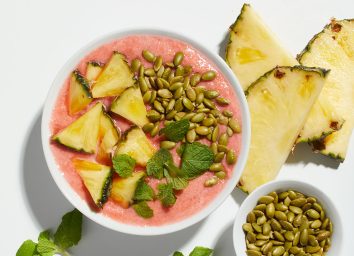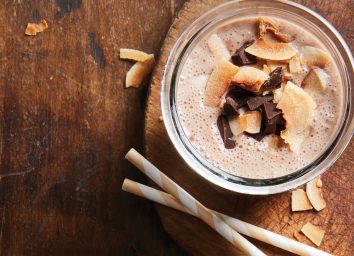9 Fruits You Need To Add to Your Smoothie for Weight Loss
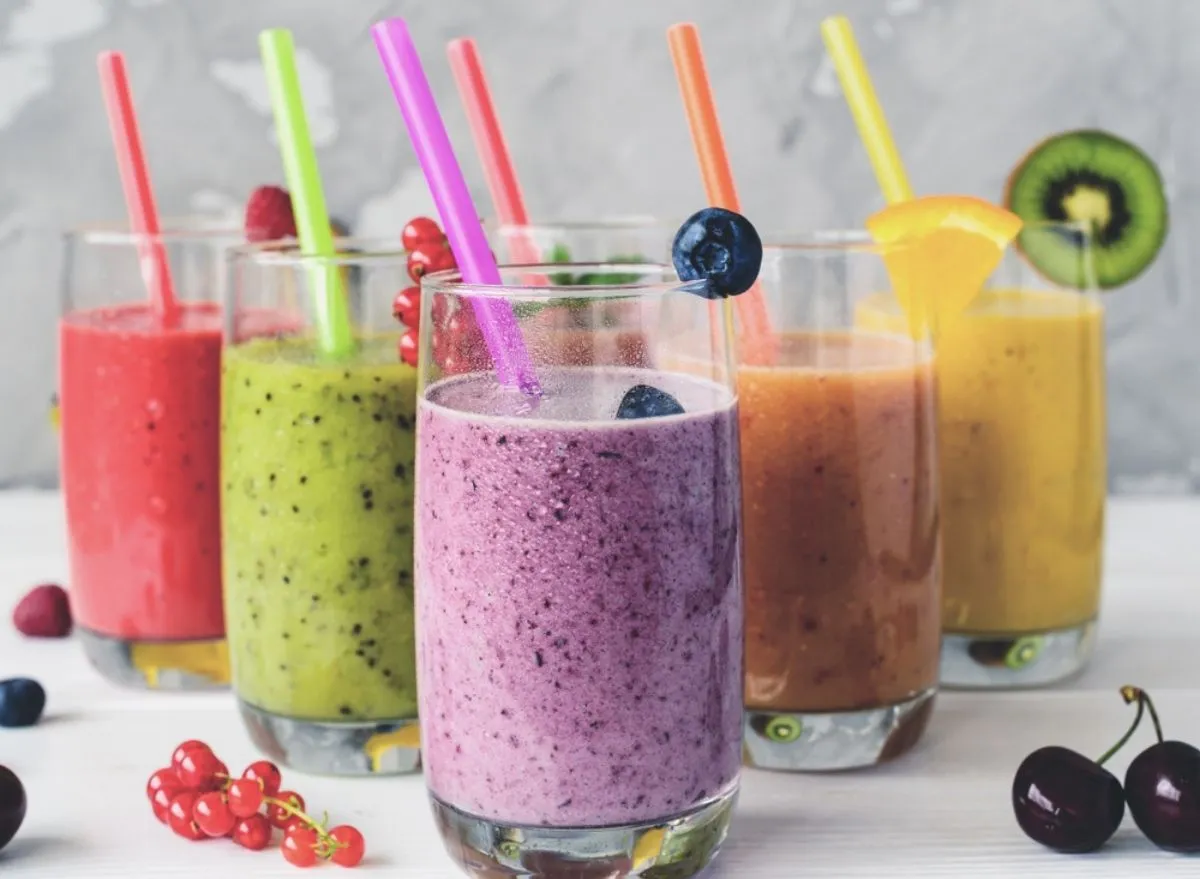
Fruit blended into a protein smoothie makes a shake for weight loss taste great without having to be sweetened with nut milk containing added sugar, flavored yogurt, honey, or some other sweetener. But like any sweetener, fruit contains sugar, so if you add too many high-sugar fruits into your smoothie, you can still spike your blood glucose.
So, fruit smoothies can be a slippery slope for people hoping to lose weight. That's why many of our medical review board dietitians offer caveats when their clients look to smoothies to help them slim down. Protein smoothies are best used as meal replacements, rather than snacks, since your ultimate goal is achieving a calorie deficit by the end of the day. But as substitutes for meals, smoothies should contain fewer calories than the meals they replace.
Julie Upton, MS, RD, co-founder of Appetite for Health Consulting, is one of the registered dietitians on our board who shuns smoothies for weight loss. "Eat your calories, rather than drink them," she advises. Drinks can be loaded with calories that you don't realize are there as you'll learn by reading 40 Drinks You Should Never Drink After 40.
Registered dietitian nutritionists Tammy Lakatos Shames, RDN, CDN, and Lyssie Lakatos, RDN, CDN, known as The Nutrition Twins, agree that whole fruits trump those blended into smoothies. They warn that overloading a smoothie with too much fruit could turn your health drink into a calorie bomb. "Drinking your calories isn't as satisfying as when you eat the real food, and you end up eating more calories later in the day," they say.
As long as you are careful about the ingredients that go into your smoothie, and about the size of the portion you consume, fruit-based smoothies still can be part of an effective weight-loss strategy. The key is keeping track of the number of calories your ingredients contribute. To that end, it's helpful to shun high-calorie bananas and avocados and favor low-calorie, low-sugar fruits with a high-water content to provide sweetness without the heavy calorie load. Here are the fruits you should be adding to your smoothies, and for more on how to eat healthy, don't miss The #1 Best Juice to Drink Every Day, Says Science.
Apple
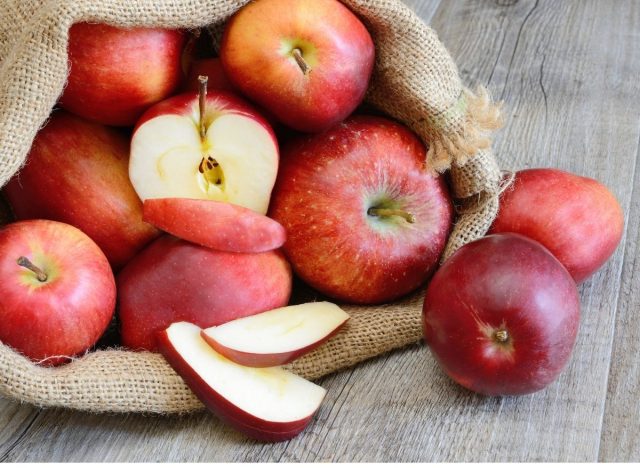
An apple is an ideal take-along snack. For one, it won't crush in your backpack the way grapes and berries can. And if you eat the skin, it is rich in fiber, which makes an apple a "low-GI" food. "GI" stands for glycemic index, a scale from 0 to 100 that shows how much a food will raise blood sugar within two hours of eating it. At a GI of 36, apples are pretty low. Eating an apple whole is the best way to reap its weight-loss benefits. But blending apple chunks in a smoothie isn't a bad second choice. A red delicious apple contains about 62 calories and 12 grams of natural sugar.
Blueberries
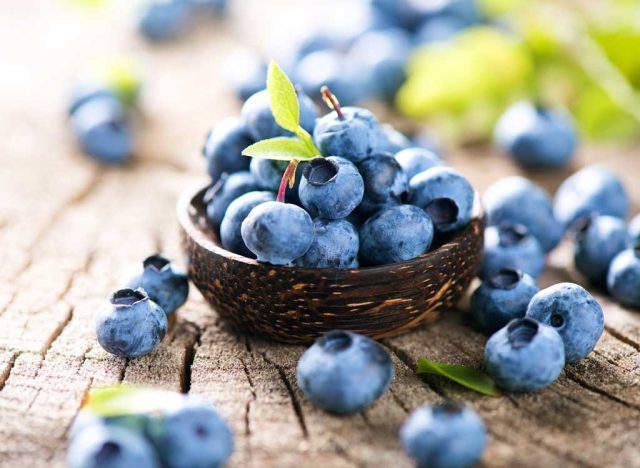
Blueberries contain more antioxidants than any other popular smoothie fruit. One called pterostilbene, which is similar to the resveratrol in grapes, has been shown to stimulate liver cells to help break down fat and cholesterol, according to USDA scientists. One cup of blueberries contains just 64 calories and 9.3 grams of sugars and a bushel full of nutrients, including fiber. You can't go wrong popping a handful in your daily smoothie or munching on them as a snack. The anthocyanins that give blueberries their deep blue color are powerful phytochemicals associated with better weight maintenance and reduced risk of type 2 diabetes and heart disease, according to Advances in Nutrition.
Cantaloupe
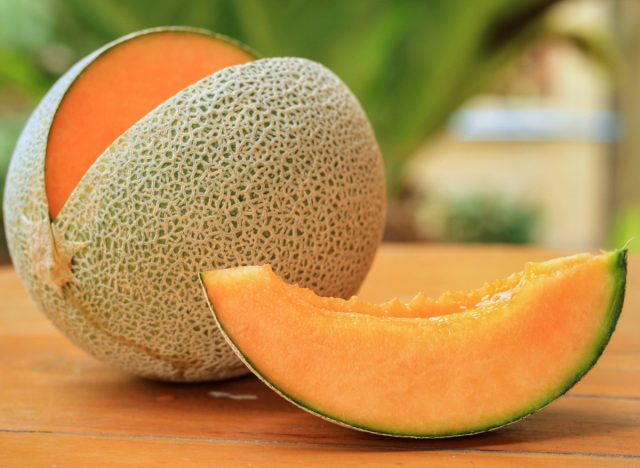
Ripe, juicy cantaloupe is nearly 90% water and rich in dietary fiber, which makes it an ideal fruit for your weight-loss-promoting smoothie as long as you don't load up your shake with high-calorie add-ins, including nut butters. One cup of cantaloupe contains 12.6 grams of sugars and 60 calories, which isn't much for all of the nutrients, including beta-carotene, folate, vitamin C, and potassium you're getting.
Cherries
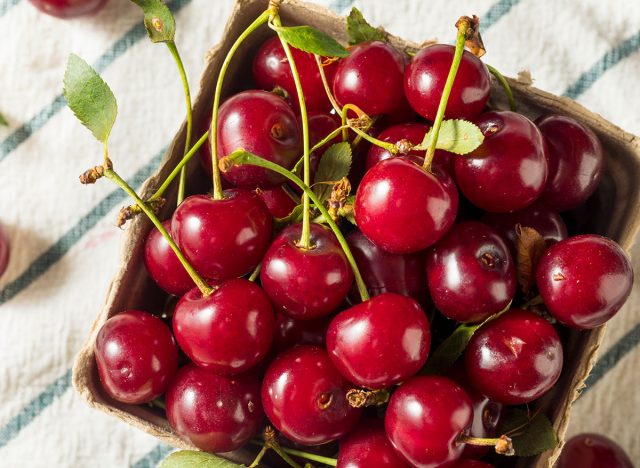
If you haven't tried cherries in your smoothie, you're missing out; they're delicious. Just don't forget to pit them, first. Tart cherries in particular are a terrific weight-loss fruit because not only are they low in calories and sugar (a half-cup contains just 48 calories and 10 grams of sugar), but they are rich in antioxidant compounds called anthocyanins that combat the free radicals that contribute to various chronic inflammatory diseases related to obesity. A review of the health benefits of cherries in the journal Nutrients found that consumption of cherries reduced exercise-induced muscle soreness and loss of strength, blood pressure, and arthritis, improved sleep, and lowered very-low-density lipoprotein, the worst type of bad cholesterol, and triglycerides.
Kiwifruit
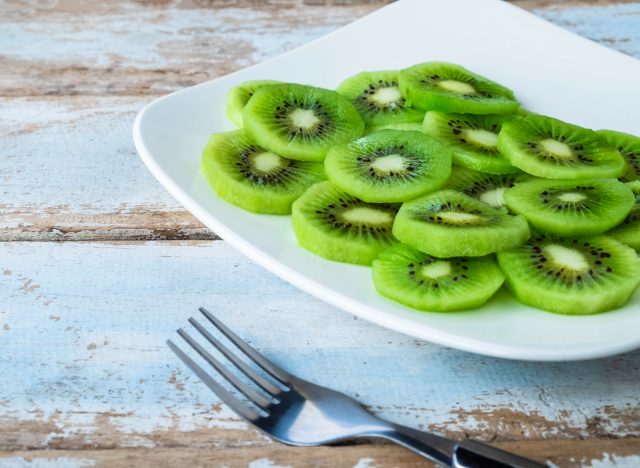
It's not the most popular smoothie fruit, but it's worth trying. Kiwi is a good source of fiber, delivering at least 3 grams of dietary fiber per serving, which can help lower the impact of the fruit's sugar on blood sugar. But don't peel the fruit; most of the fiber is found in the brown skin. Cut it into chunks and blend it well in a blender. Small studies suggest that regular consumption of kiwifruit can reduce body fat mass and lower blood pressure. A serving of kiwi contains 64 calories and 9 grams of sugars.
Grapefruit
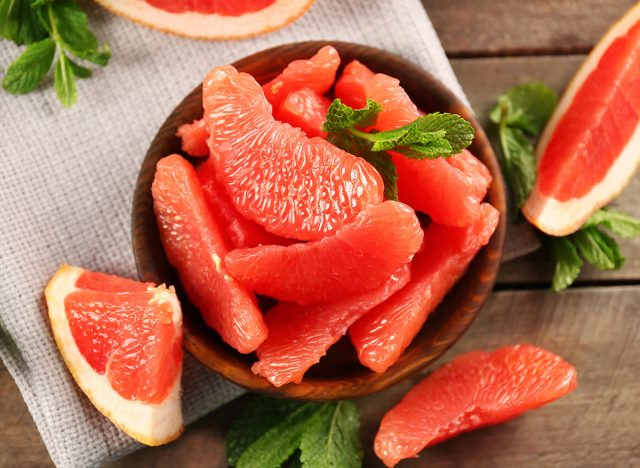
A 12-week study involving 91 obese patients demonstrated the potential for eating fresh grapefruit as a potent weight loss strategy. The research in the Journal of Medicinal Food showed that people who ate half of a fresh grapefruit before meals lost an average of 3.5 pounds in 12 weeks. The subjects' insulin response improved as well, the study found. So, if weight loss is your goal, you might try keeping halves of grapefruit at the ready at mealtimes. Another option: make a grapefruit-based smoothie for a meal replacement. A half-cup of grapefruit sections with juice contains just 37 calories and 8.5 grams of sugars.
Strawberries & Raspberries
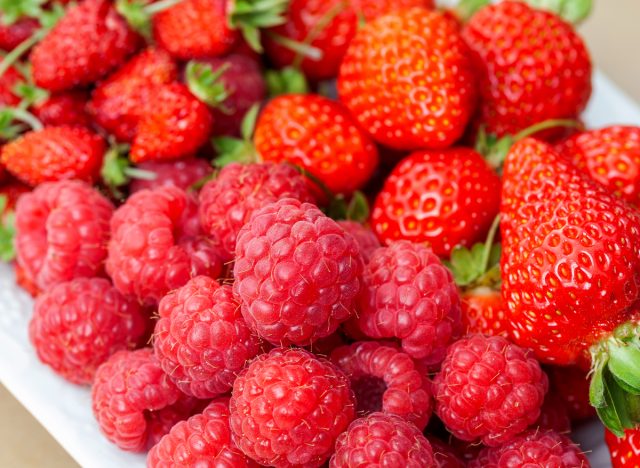
Nature's candy is loaded with vitamin C for immune-system strength, and it's high in water content and fiber, making it a great fruit for weight maintenance. Strawberries have 49 calories, 7 grams of sugars and about 3 grams of fiber per 1 cup serving. Raspberries are even lower in sugar at just 2.6 grams per 57-calorie, ¾-cup serving. They don't last long in the fridge so keep your freezer stocked with a bag. Frozen berries (strawberries, raspberries, blackberries, and blueberries) are just as nutritious as fresh ones.
Watermelon
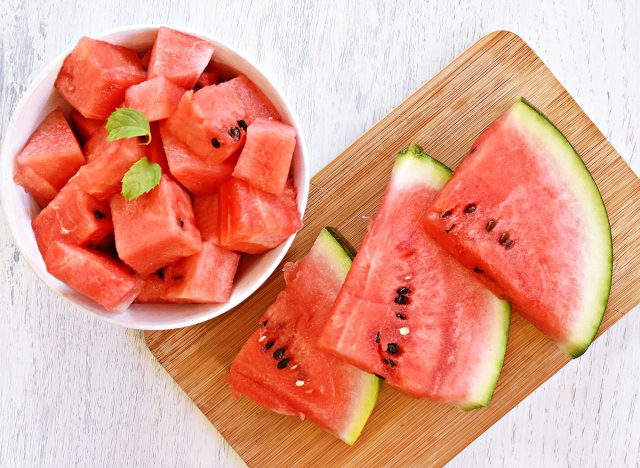
Watermelon is an example of a fruit that has a high glycemic index but is actually fine for people who are overweight or have high blood sugar because it is high in water content and fiber and low in carbohydrates. A 2019 study in the journal Nutrients compared overweight people who ate daily snacks of watermelon or low-fat cookies for four weeks. The researchers found that the watermelon made the subjects less hungry after eating and by the end of the trial decreased body weight, body mass index, blood pressure, and waist-to-hip ratio. A cup of watermelon delivers just 45 calories and about 9 grams of sugars. Check out these 8 Best Smoothie Recipes for Managing Blood Sugar.

